Unlock the Secrets of Gem Mining Texas: A Comprehensive Guide
From the shimmer of topaz to the allure of agate, the Lone Star State has long been associated with precious gemstones. The art of gem mining in Texas, as in many places, is a blend of patience, knowledge, and a touch of luck. In this comprehensive guide, we delve into Texas’s gemstone treasures, unveiling where to find them, their historical significance, and more.
The Most Popular Gemstones in Texas
Texas is a land of geological wonders, and this is reflected in the vast array of gemstones that can be found within its borders. From the captivating brilliance of the state gem, blue topaz, to the more common but equally mesmerizing stones like agate, Texas offers a kaleidoscope of treasures for the avid rockhound. Here’s a breakdown:
Rare Gemstones in Texas:
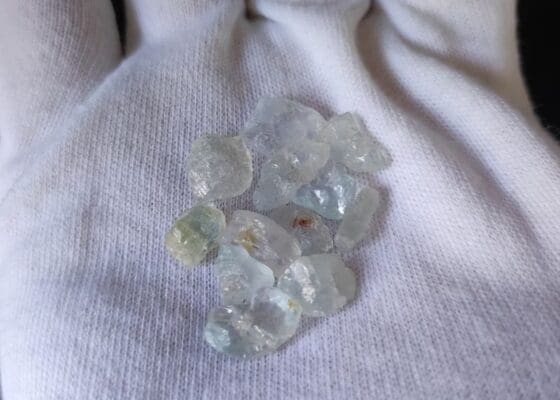
| Gemstone | Description |
|---|---|
| Blue Topaz | A radiant blue stone, especially the Mason County Blue variety. It’s the state gem of Texas. |
| Turquoise | A blue-green stone cherished for its vibrant color and historical significance, mainly found in the West Texas area. |
| Red Beryl | Much rarer than diamonds, it’s a red gemstone that rivals the ruby in its fiery intensity. |
| Garnet | Typically deep red, this gem is found in specific pockets of Texas and has a rich luster. |
| Opal | Texas opals can range from clear to multicolored with vibrant play-of-color displays. |
Common Gemstones in Texas:

| Gemstone | Description |
|---|---|
| Agate | A banded or variegated stone, known for its multiple patterns and colors. |
| Jasper | An opaque variety of quartz, usually red, yellow, or brown. |
| Calcite | Found in a variety of colors, it’s known for its rhombohedral cleavage and double refraction. |
| Quartz Crystal | Clear, often transparent, and used in a variety of jewelry and decor. |
| Fluorite | Ranges in color but is often purple or green and fluoresces under UV light. |
| Amethyst | A purple variety of quartz, beloved for its rich color. |
| Chert | Often seen as flint, it’s used historically for tools and can be found in various colors. |
| Petrified Wood | Ancient wood that’s turned into stone, often showcasing tree rings and bark patterns. |
| Pyrite | Known as “fool’s gold”, it’s a metallic mineral with a brassy-yellow hue. |
| Barite Rose | A reddish-brown stone that forms in a rose-like shape; it’s unique and sought after by collectors. |
From the incredibly rare gems that can turn a simple day trip into a lifetime memory, to the more common stones that still bring joy and wonder, Texas offers a range of possibilities for those willing to explore its geologic wealth.
Top Gem Mining Locations in Texas

- Mason County: Often termed the “Blue Topaz Capital of Texas”, Mason County is the primary destination for those seeking the state gem. Found in Central Texas, its operating hours and fees may vary by site, so always check before heading out.
- Llano River: Situated in Hill Country, Texas, the Llano River offers not just gold but a diverse range of gemstones. As a public river, access is typically free, but it’s important to ensure you’re not encroaching on private property.
- Big Bend Area: This region in West Texas is a prime spot for hunting agates and jasper. Again, while many areas are public lands, always be cautious of private properties. The vast expanse means operating hours are mostly unrestricted, but amenities might be sparse.
- Garner State Park: Located in Concan, Texas, this park offers chances to find agates, jasper, and fossils. There’s an entrance fee for the park, and it’s open from 8 AM to 10 PM daily.
- Barite Rose Rock State Yard: Found in Noble, Texas, this site is famous for the unique barite rose formation. Hours are usually 8 AM to 5 PM, but it’s advisable to check beforehand. Fees vary, but it’s relatively affordable.
- Starr Mountain: Nestled in East Texas, Starr Mountain is a hotspot for quartz crystals and even the occasional amethyst. Operating hours can be vast due to the mountainous region, but always ensure to respect any restricted areas.
- Palo Duro Canyon State Park: Situated in Canyon, Texas, this park offers chances for finding agates and fossils. There’s a daily entrance fee, and the park typically operates from 7 AM to 10 PM.
- West Texas Agate Fields: Stretching across the vast West Texas landscape, these fields are ideal for those hunting agates, jasper, and occasionally turquoise. While there’s no specific operating time for the vast fields, always stay aware of private lands.
- Devils River: Located north of Del Rio, this river is a treasure trove of calcites and other minerals. Access is mainly unrestricted, but as always, respect private properties and protected areas.
- East Needle Peak: Situated in the Big Bend region, this site is popular among seasoned rockhounds for the diverse range of gemstones, including agates and fluorite. There’s no specific operating time, but it’s a remote location, so always be prepared.
Each of these Texas locales holds its own allure for the gem hunter. While some offer easy access and amenities, others might require a bit of adventurous spirit. Always do thorough research, respect the environment, and happy hunting!
History of Gem Mining in Texas

The rich tapestry of gem mining in Texas weaves back millennia, long before the advent of modern mining equipment and techniques. The Native Americans, the state’s earliest known inhabitants, were the first to recognize the value of Texas’s geologic wonders. They mined turquoise and traded it along vast networks, establishing the Lone Star State’s initial reputation as a land rich in valuable minerals.
As European settlers began to populate Texas in the 18th and 19th centuries, tales of the land’s bounty spread. Soon, many were scouring its hills, rivers, and plains, searching for precious gemstones. The 20th century, in particular, saw a surge in both amateur and professional mining activity. The discovery of unique blue topaz in Mason County placed Texas firmly on the gem mining map. This Mason County Blue variety, exclusive to Texas, drew prospectors and gem enthusiasts from all corners of the nation.
The allure wasn’t just about the topaz. West Texas became synonymous with exquisite agates, characterized by their mesmerizing patterns and colors. These agates, some dating back millions of years, told tales of volcanic activity and geological transformations. Places like the Big Bend Area became sought-after destinations for rockhounds aiming to uncover these ancient narratives crystallized in stone.
Moreover, the boom wasn’t just about the gems but also the community around it. Events like the annual Llano Earth Art Fest, which celebrates the region’s diverse geology, emerged, forging a tight-knit community of enthusiasts, traders, and artists.
However, with growth came challenges. As the popularity of gem mining grew, so did the need to regulate it to protect both the environment and the rights of private landowners. This balance between conservation and exploration has always been at the forefront of Texas’s gem mining narrative.
In conclusion, the history of gem mining in Texas is more than just about the gems unearthed. It’s a story of communities, evolving techniques, conservation efforts, and the age-old human quest for beauty and value. This rich history makes every gem found in Texas not just a piece of mineral but a fragment of the state’s vibrant past.
Gem Mining Regulations in Texas

In Texas, as with many treasures, the hunt for gems is bound by a tapestry of regulations that aim to strike a balance between the enthusiastic pursuit of these natural wonders and the preservation of both private and environmental rights. Understanding these regulations is essential for anyone planning to embark on a gem hunting expedition in the Lone Star State.
First and foremost, one must always be cognizant of property boundaries. Much of Texas’s land is privately owned, and prospecting without permission is both illegal and disrespectful. Trespassing could result in hefty fines or even arrest. For those interested in specific areas, it’s essential to contact landowners directly and ask for permission. Many are accommodating and might even offer insights or tips based on their local knowledge.
Public lands, like state parks, often have specific rules governing gem hunting. Some may allow casual collection for personal use, while others might prohibit it entirely. Garner State Park and Palo Duro Canyon State Park, for instance, might allow visitors to pick up stones off the ground, but digging or using mining tools could be off-limits. Always consult with park officials or rangers before beginning your hunt.
Rivers and waterways introduce another layer of complexity. While the Llano River is a public space, the banks or adjoining areas might be private property. Moreover, while one might be free to pan or search for gems in the river, the state has strict rules about disturbing the natural environment, which includes dredging or diverting water flow.
Moreover, there are also environmental regulations to consider. Texas is home to various delicate ecosystems, and unregulated mining can result in soil erosion, habitat destruction, and other environmental impacts. Adhering to a “leave no trace” philosophy is not just a suggestion; it’s a requirement.
Furthermore, any sales or commercial use of gemstones found in Texas might be subject to additional regulations or taxes. Those looking to turn their hobby into a business need to consult local business regulations and state tax codes.
In conclusion, while the heart of gem hunting lies in the thrill of discovery, it’s equally important to approach this passion with a sense of responsibility. Abiding by the regulations ensures that the beauty of Texas remains undisturbed for future generations and that the legacy of gem hunting remains untarnished. Respect for the land, its owners, and the environment is as precious as the gems themselves.
Necessary Tools and Equipment for Gem Mining in Texas
Gem mining, like any adventurous endeavor, demands not only enthusiasm but also the right set of tools. When equipped with the proper gear, one can maximize their chances of finding the hidden treasures Texas terrains have to offer. But more than just facilitating the discovery, the right tools ensure safety, efficiency, and respect for the environment.
1. Screening and Classifying Tools: Reveal those hidden treasures!
Description: Especially useful near riverbeds, these screens help separate gems from mud, sand, and other debris. A set with multiple mesh sizes can be beneficial.

🛒 Explore Top Screening Sets on Amazon
2. Shovels and Trowels: Digging deep or just scratching the surface?
Description: For digging in soft earth or moving aside debris, a sturdy hand shovel is a must-have. Opt for a compact design that’s easy to carry yet durable enough to withstand rugged conditions.

🛒 Find Quality Shovels and Trowels on Amazon
3. Picks and Hammers: The backbone of any gem hunting endeavor.
Description: A rockhound’s trusty sidekick, this hammer is essential for breaking apart rocks or chipping away at formations. Its flat side is used for striking, while the pointed end aids in prying rocks apart.

🛒 Check Out Best Picks and Hammers on Amazon
4. Buckets: Your trusted companion for carrying treasures.
Description: The basics of any mining endeavor, a sturdy bucket, and shovel are essential. A standard garden shovel will suffice, but there are specialized shovels with pointed tips that make breaking into the earth easier.

🛒 Shop for Reliable Buckets on Amazon
5. Magnifying Glass: Every detail counts!
Description: Once you’ve unearthed potential gems, these tools can help in closer examination, ensuring you don’t overlook any valuable finds.

🛒 Grab Your Magnifying Glass on Amazon
6. Guidebooks and Field Guides: Knowledge at your fingertips.
Description: Before delving into the technicalities, arm yourself with a comprehensive field guide. Such a guide provides invaluable knowledge about local geology, helping you identify potential gemstones and familiarize yourself with the various regions of Texas.

🛒 Discover the Best Field Guides on Amazon
7. Containers and Bags: Organize, store, and flaunt your finds.
Description: These are essential for storing and organizing the gems you find. Labeling them can also help in remembering the specifics of where and when each gem was found.

🛒 Shop for Storage Solutions on Amazon
8. First Aid Kit: Better safe than sorry!
Description: Given the nature of gem mining, small injuries can occur. Always be prepared with a basic first aid kit containing bandages, antiseptic wipes, and pain relievers.

🛒 Secure Your First Aid Kit on Amazon
In conclusion, a successful gem mining excursion in Texas hinges on adequate preparation. By ensuring you have the right tools and equipment, you enhance your gem hunting experience, ensuring safety, success, and sustainability.
Tips and Tricks for Successful Gem Mining in Texas

Embarking on a gem mining adventure in the vast landscapes of Texas is as much about skill as it is about luck. Whether you’re a seasoned rockhound or a beginner eager to uncover nature’s treasures, a few handy tips can significantly enhance your experience, ensuring both fruitful finds and memorable moments.
- Research: Before setting out, thoroughly research your chosen location. Online forums, local mining groups, and geological surveys can provide valuable insights, recent discoveries, or changes in accessibility.
- Start Early: Beat the Texas heat by starting early. The morning hours not only offer a cooler climate but also the advantage of soft, diffused light, making gem spotting easier.
- Work With Nature: When hunting near rivers, move downstream. Gemstones, being heavier, tend to settle in crevices or behind large rocks. Gently agitating the surface can also reveal submerged gems.
- Look For Tailings: These are piles of material removed from mines. While it may seem counterintuitive, often miners might have overlooked or missed smaller gems.
- Rain is Your Friend: A gentle rain can wash away the top layer of dirt, exposing new rocks and potential gemstones. After a shower, it’s prime time for gem spotting.
- Safety First: Always inform someone about your plans and your expected return. Given Texas’s vastness, it’s easy to wander off track. A check-in buddy ensures someone’s aware of your whereabouts.
- Layered Clothing: Texas weather can be unpredictable. Dressing in layers allows you to adjust to varying temperatures throughout the day.
- Stay Hydrated: Gem hunting can be labor-intensive and, combined with the Texas heat, can quickly lead to dehydration. Always carry ample water and take regular breaks.
- Document Your Finds: Carry a notebook or digital device to document the location, type, and size of your finds. This not only helps in keeping track but also in understanding patterns over time.
- Network: Joining local gem and mineral clubs can be invaluable. These groups often organize collective trips, share knowledge, and might even have access to exclusive mining sites.
In essence, successful gem mining in Texas isn’t just about the tools you carry but also the knowledge you possess and the precautions you take. It’s an adventure, a science, and an art. With the right blend of preparation and respect for nature, the Texan terrains promise both dazzling gems and enriching experiences.
Handling Your Gemstone Finds
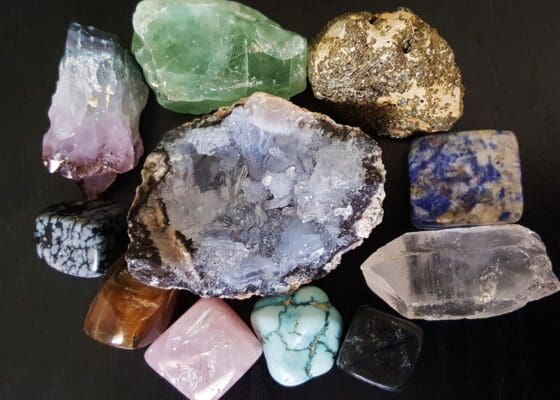
Unearthing a gemstone in the sprawling landscapes of Texas is an exhilarating moment. However, the journey doesn’t end with the discovery. Properly handling, cleaning, and preserving your finds ensures that their beauty remains intact and their value is recognized. Here’s a comprehensive guide to treating your Texas gemstones with the care they deserve.
- Gentle Cleaning: Immediately after finding a gemstone, a simple rinse with water can remove loose dirt. For stubborn soil, a soft brush, like a toothbrush, and mild soap can be used. Remember, some gemstones can be scratched or damaged by harsh chemicals or abrasive materials.
- Documenting the Find: Before storing, it’s beneficial to document your gemstone. Note its size, color, location of discovery, and any unique characteristics. This not only helps in identification but also adds to its provenance should you decide to sell or display it.
- Proper Storage: Gemstones should be stored separately to prevent them from scratching each other. Soft, fabric-lined boxes or individual pouches are ideal. Keep them away from direct sunlight, as some gemstones can fade over time.
- Consulting Experts: If you believe you’ve found a particularly valuable gemstone, it might be worth consulting a gemologist. They can provide insights into its quality, value, and potential treatments to enhance its appearance.
- Avoiding Harsh Treatments: Some gems can be sensitive to temperature changes, ultrasonic cleaners, or steam. Always do your research or consult with experts before attempting any restoration or cleaning methods.
- Displaying Your Gems: If you wish to display your finds, consider investing in a display case that offers protection from dust and UV light. Properly lit cases can accentuate the gem’s natural brilliance.
- Insurance: For especially valuable finds, consider getting them appraised and insured. This ensures protection against potential loss or damage.
- Learning About Gem Faceting: If you’re interested in maximizing the beauty of your gemstones, you might want to delve into the world of gem faceting. This art transforms rough stones into sparkling jewels.
- Respecting the Stone: Every gem has its own set of characteristics and vulnerabilities. It’s essential to understand and respect these nuances, whether it’s sensitivity to light, susceptibility to chemicals, or inherent fragility.
- Stay Updated: Gemstone care techniques evolve with research and technology. Join gem enthusiast groups, read books, and stay updated on the best practices for gem care.
In essence, every gemstone you uncover in Texas carries with it a fragment of the state’s rich geological tapestry. By handling it with care, you’re not just preserving a piece of mineral; you’re cherishing a part of Texas’s vibrant legacy.
Famous Gemstone Finds in Texas
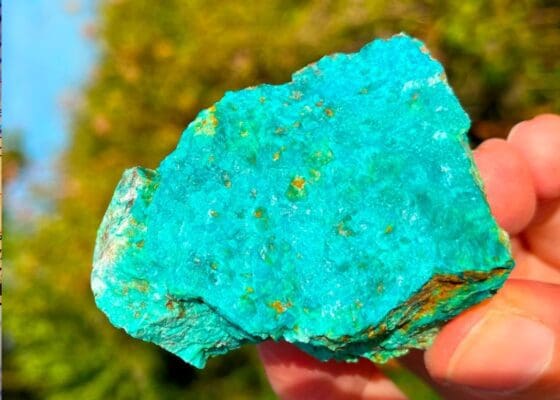
Texas, with its diverse geological composition, has yielded some remarkable gemstone finds over the years. These discoveries, some celebrated for their size and others for their rare beauty, have added to the allure of gem hunting in the Lone Star State. Here’s a journey through some of the most legendary gemstone finds in Texas.
- The Lone Star Blue Topaz: The official gem of Texas, Blue Topaz has seen numerous spectacular finds. However, the “Lone Star Blue Topaz” stands out due to its impressive size and quality. Found in Mason County, this gemstone has become emblematic of Texas’s rich mineral wealth.
- The Marfa Red Agate: Discovered near the enigmatic Marfa lights, this particular agate is known for its deep red hue interspersed with streaks of white and blue. Its vivid colors and the mystery of its location have given it a near-mythical status among gem enthusiasts.
- Llano River Garnets: Along the banks of the Llano River, several impressive garnets have been uncovered. Their deep red hue, sometimes approaching a ruby-like clarity, has made them prized by collectors.
- The West Texas Fire Opal: Unearthed in the arid landscapes of West Texas, this fire opal stands out for its radiant blend of reds, oranges, and yellows, capturing the essence of a Texan sunset within its facets.
- Big Bend Turquoise: From the vast expanses of the Big Bend region, several turquoise specimens have emerged, but a few, known for their unique matrix patterns and vibrant colors, have become legends in their own right.
- Palo Duro Canyon Geodes: In the depths of Palo Duro Canyon, geodes with captivating crystal interiors have been found. Some of these geodes, once cracked open, revealed amethyst clusters of exceptional quality.
- Guadalupe Pearls: Though not strictly gemstones, these freshwater pearls found in the waters of the Guadalupe River are famed for their luster and have even caught the attention of European jewelers in the past.
- Brewster County Celestite: Known for its ethereal blue color, celestite finds in Brewster County have stood out for their size and crystalline perfection.
- Houston Museum Smoky Quartz: Currently displayed in a Houston museum, this smoky quartz crystal, weighing several pounds, is a testament to the potential of Texas’s mineral wealth.
- Enchanted Rock Peridot: This gemstone, named after the iconic Enchanted Rock where it was found, is celebrated for its vibrant green hue and near-flawless clarity.
These famous finds serve as a beacon for both amateur and seasoned gem hunters, promising that with perseverance, passion, and a touch of luck, Texas’s terrains might just unveil their hidden treasures to the discerning eye.
Additional Gem Mining Opportunities
Gem hunting isn’t confined to the boundaries of Texas. The allure of uncovering hidden treasures extends across state lines, offering diverse landscapes and unique geological formations. Here’s a look at some neighboring states where you can continue your gem hunting journey:
- Oklahoma Gem Mining: Directly to the north of Texas, Oklahoma boasts a range of gems, including the coveted hourglass selenite and colorful barite roses.
- Arkansas Gem Mining: Known particularly for its quartz crystals, Arkansas also offers the exciting possibility of finding diamonds at the Crater of Diamonds State Park.
- Louisiana Gem Mining: While not as famous as its neighbors for gems, Louisiana offers beautiful agates and petrified wood in its alluvial plains.
- New Mexico Gem Mining: The enchanting landscapes of New Mexico hide treasures like turquoise, peridot, and opal, drawing gem enthusiasts from all corners.
- Mexico Gem Mining: Venturing a bit further south, the vast terrains of Mexico offer opals, especially the mesmerizing fire opal, alongside a plethora of other stunning gemstones.
While Texas remains a gem-hunter’s paradise, these neighboring regions extend the adventure, each offering its unique geological tapestry, waiting to be explored and admired.
Explore our Gem Mining Near Me guide to uncover the secrets of successful gem mining and top locations.
The Allure of Texan Gem Treasures and a Convenient Alternative
The vast landscapes of Texas, rich in geological diversity, hold a magnetic appeal for both amateur and seasoned gem hunters. The thrill of discovery, combined with the state’s rugged beauty, makes every gem hunting expedition a unique adventure. Each find, be it a sparkling topaz or a radiant fire opal, is not just a tangible treasure but a chapter in the state’s millennia-old geological narrative.
However, the rigors of travel, the unpredictability of weather, and the challenges of outdoor gem hunting aren’t always feasible for everyone. Enter the magic of the Gem Mining Kit — a curated experience that brings the joy of discovery to your doorstep. With this kit, enthusiasts can sift through rich, gem-laden soil, unearthing treasures from various global locales, all from the comfort of their homes. It’s a delightful taste of the broader world of gem hunting, and a perfect complement to the Texan gem adventure.

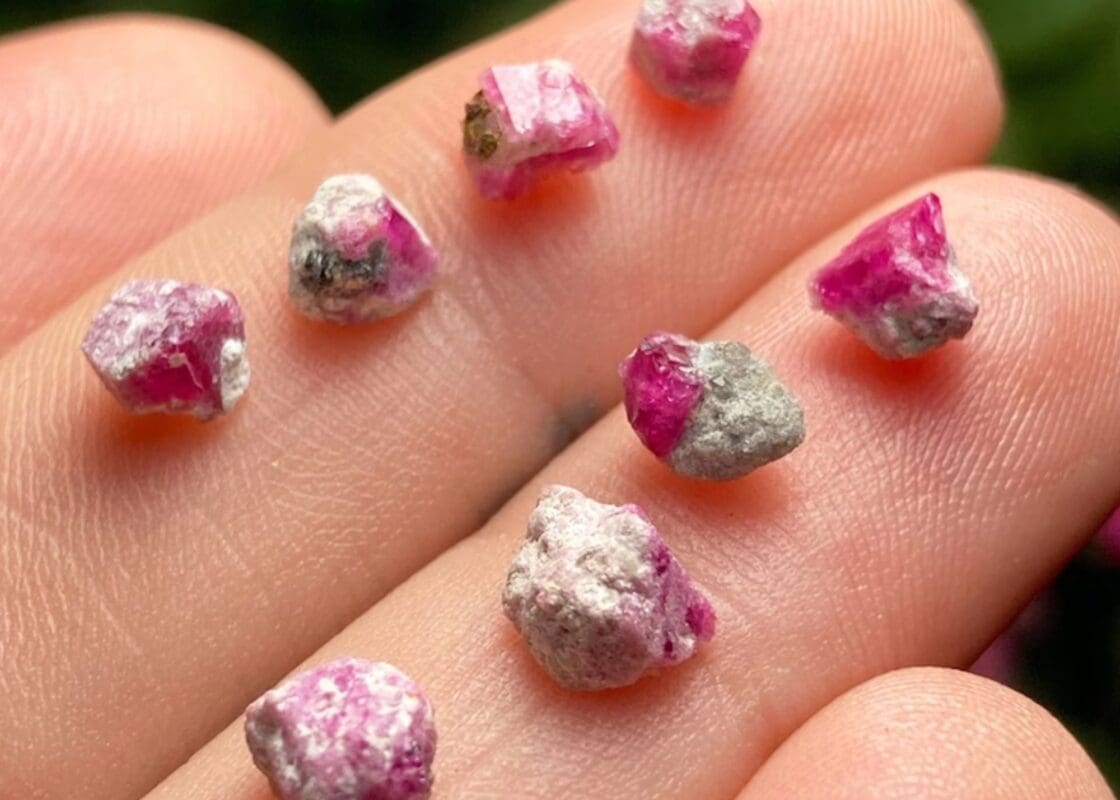
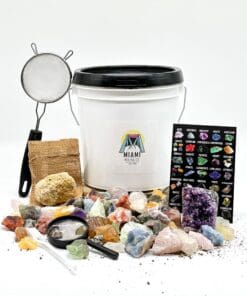
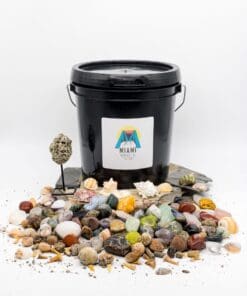
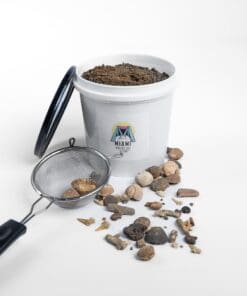

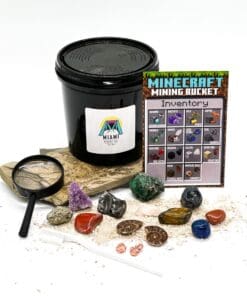
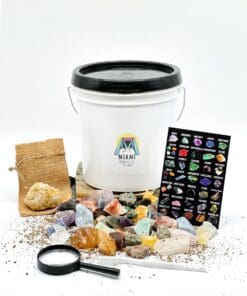


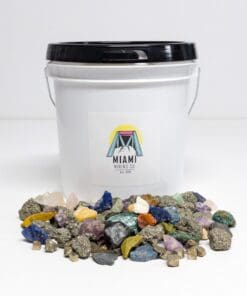
Amy idea on specific spots open to public around Llano river